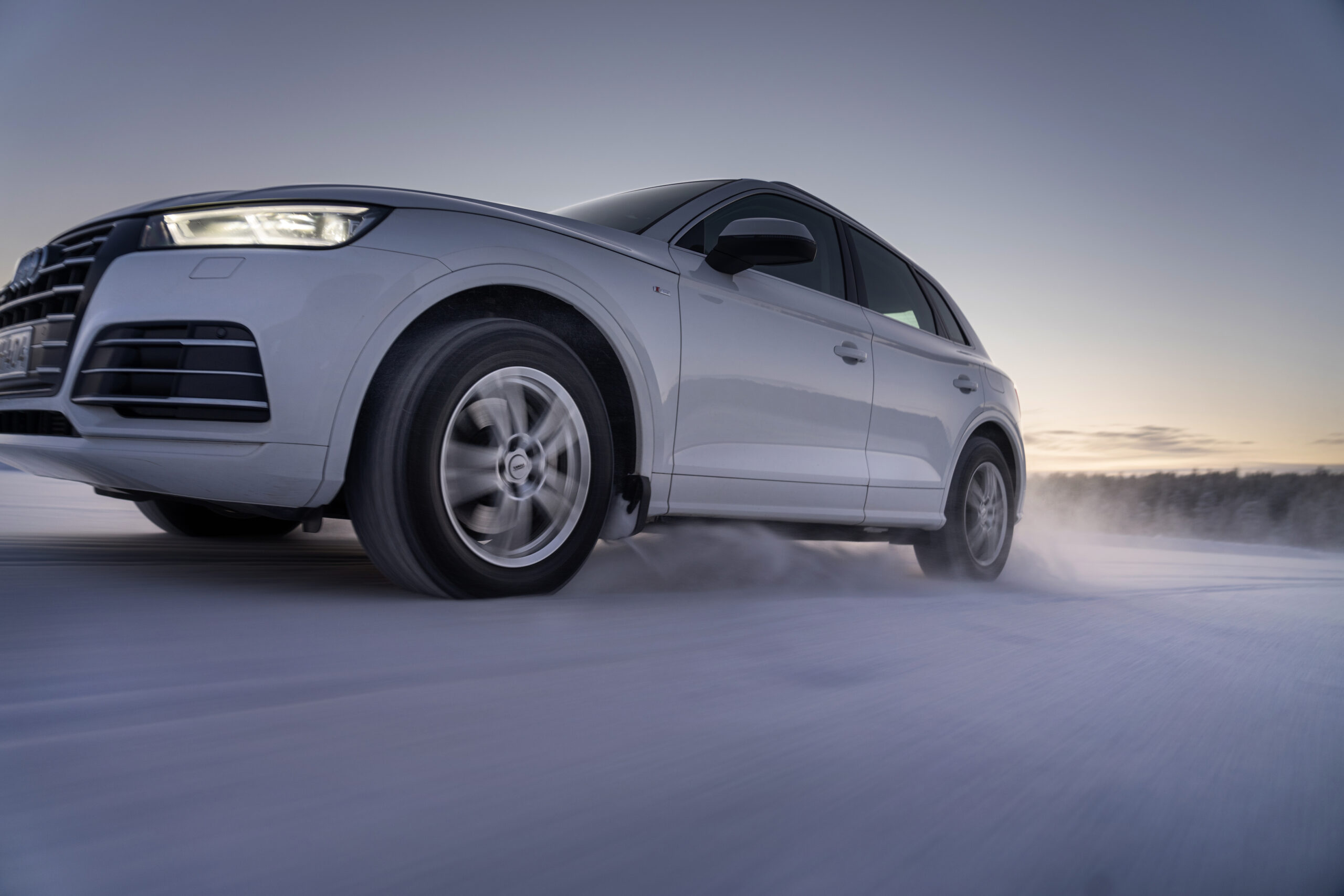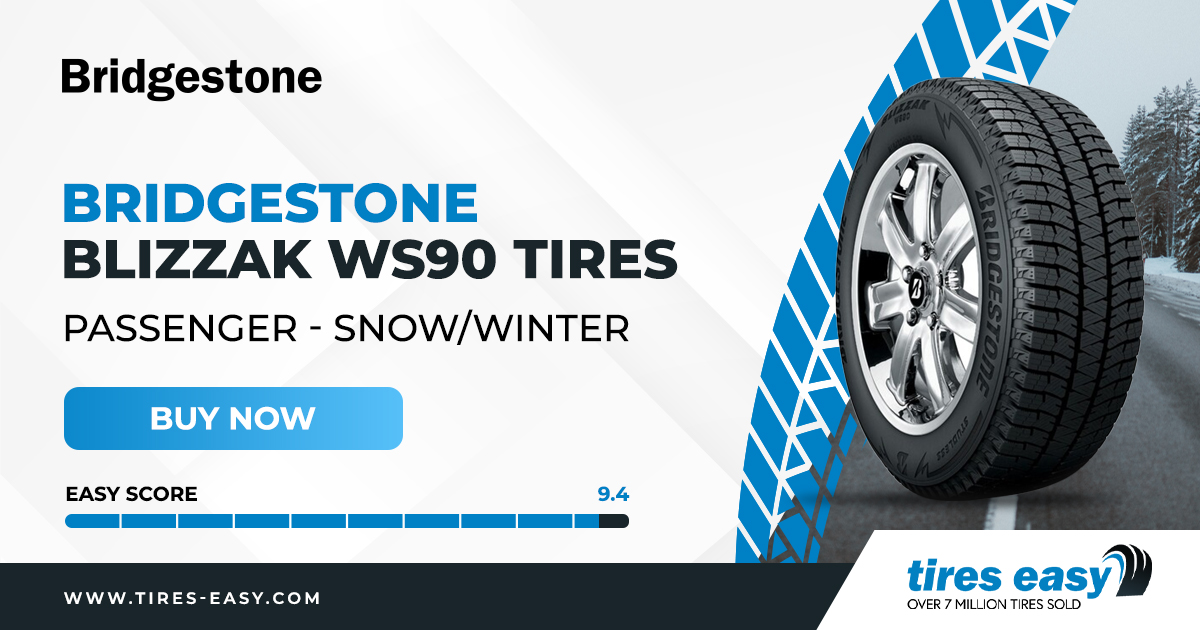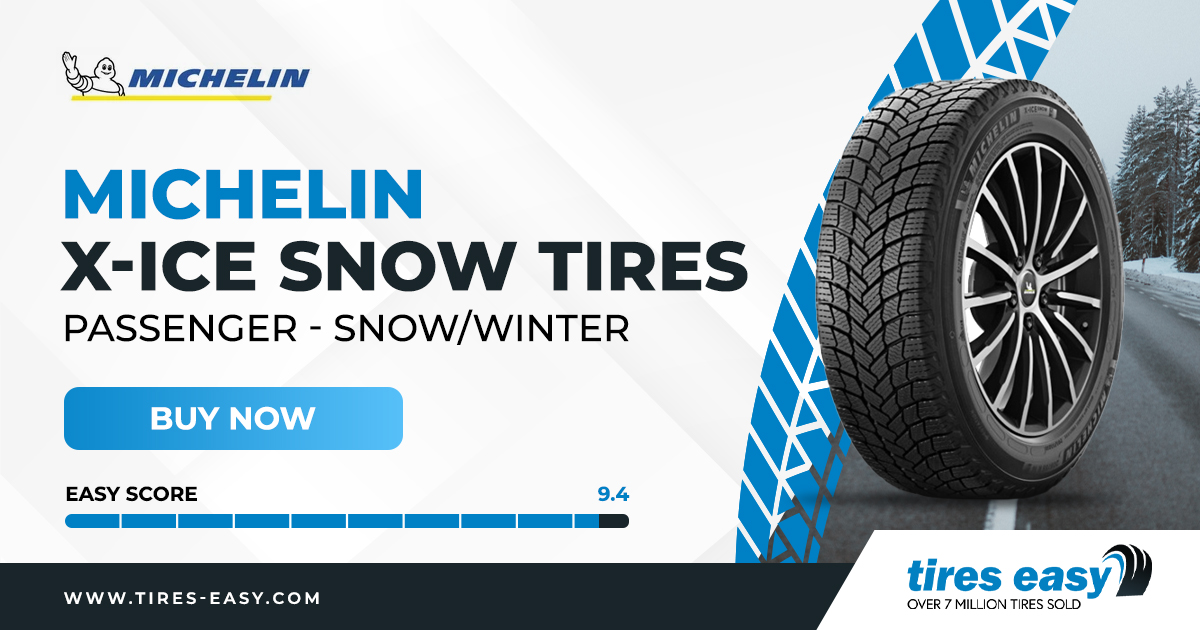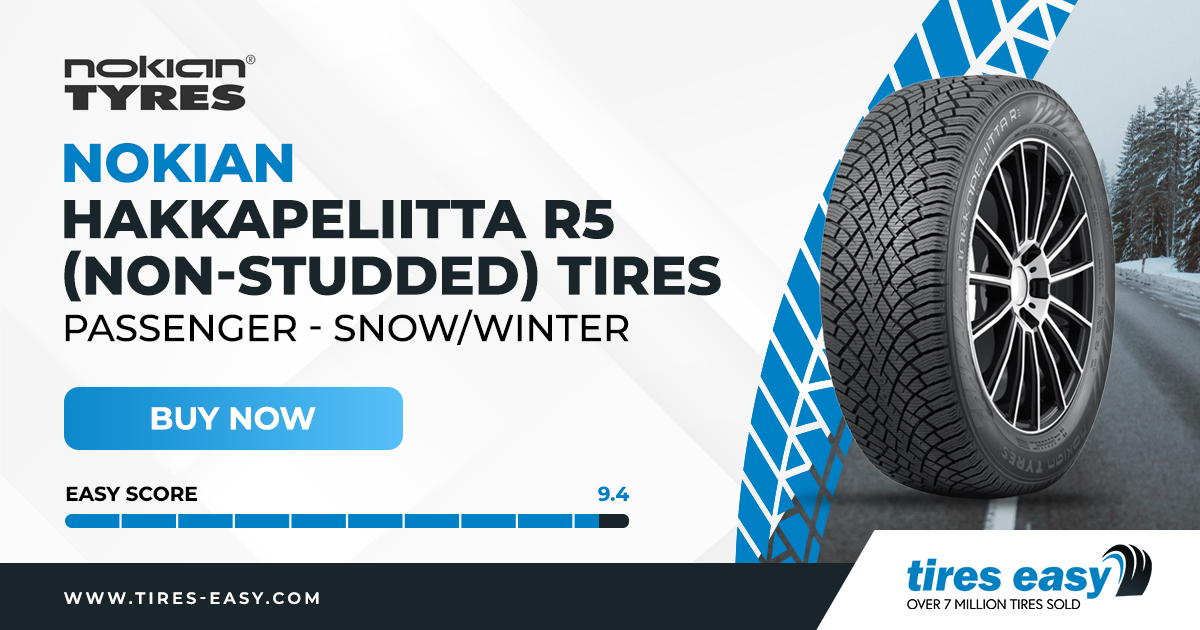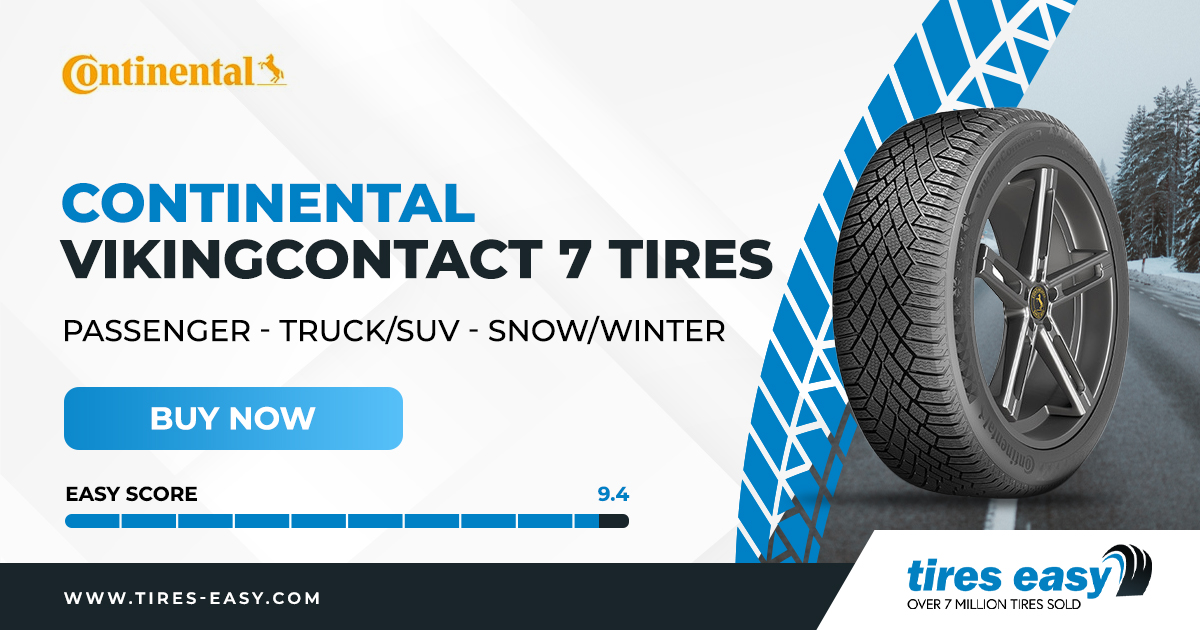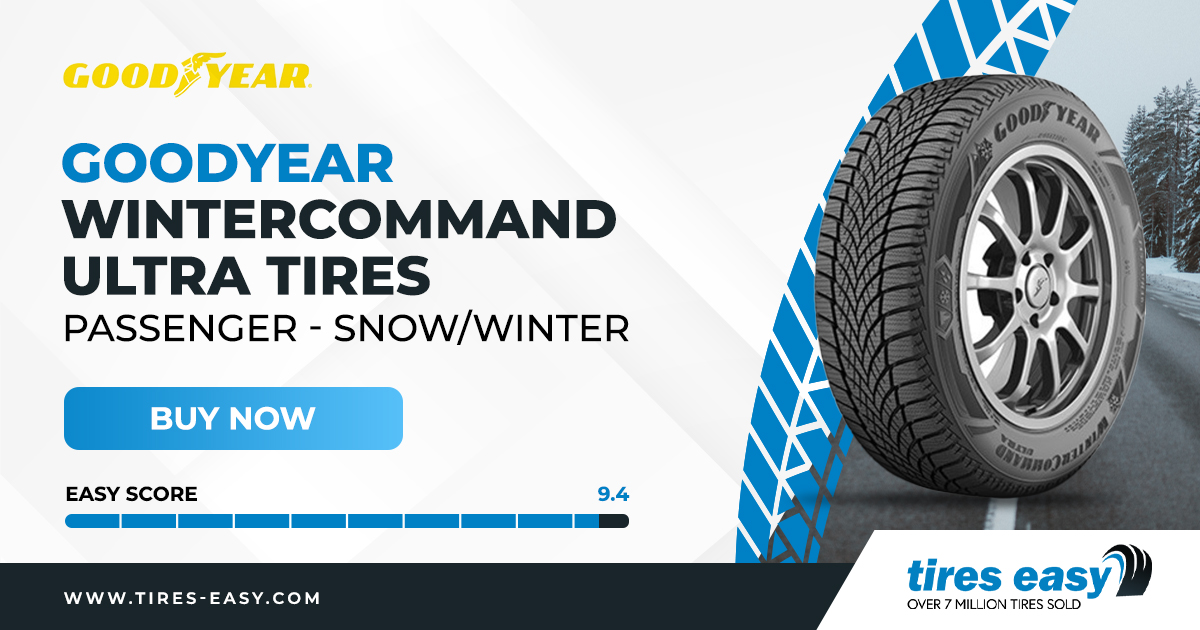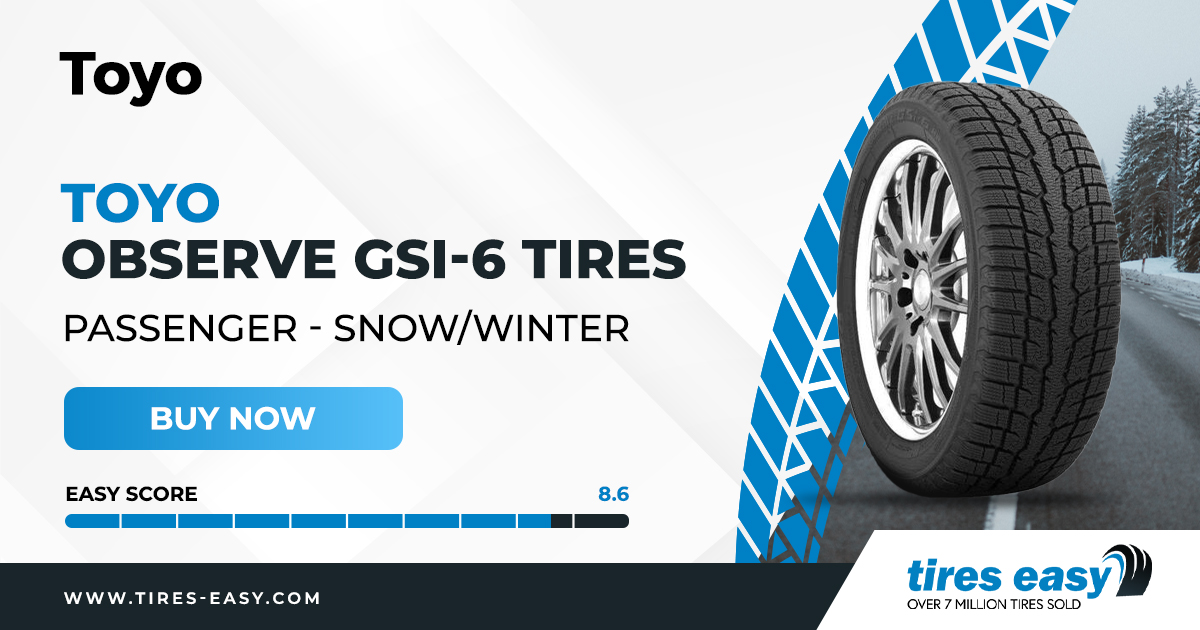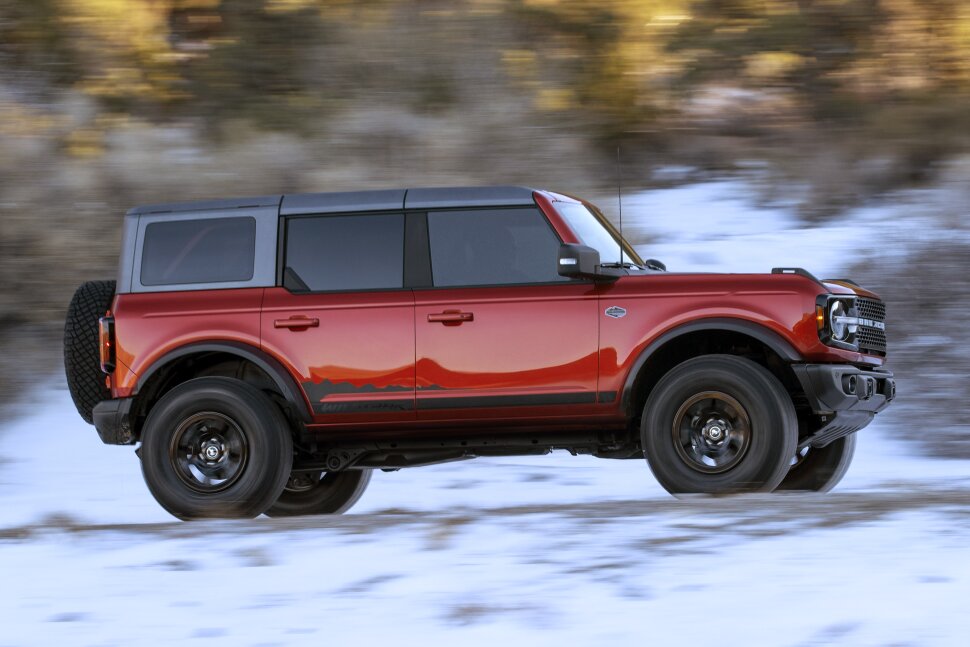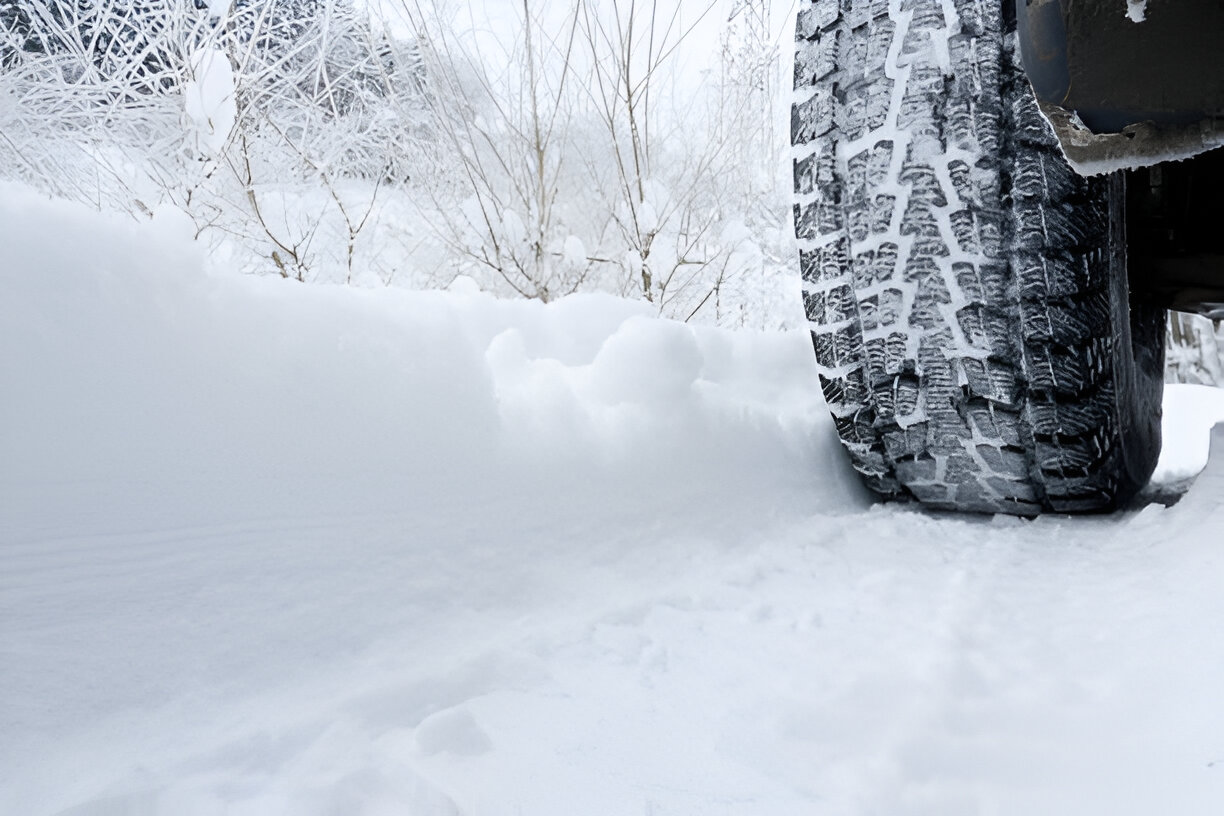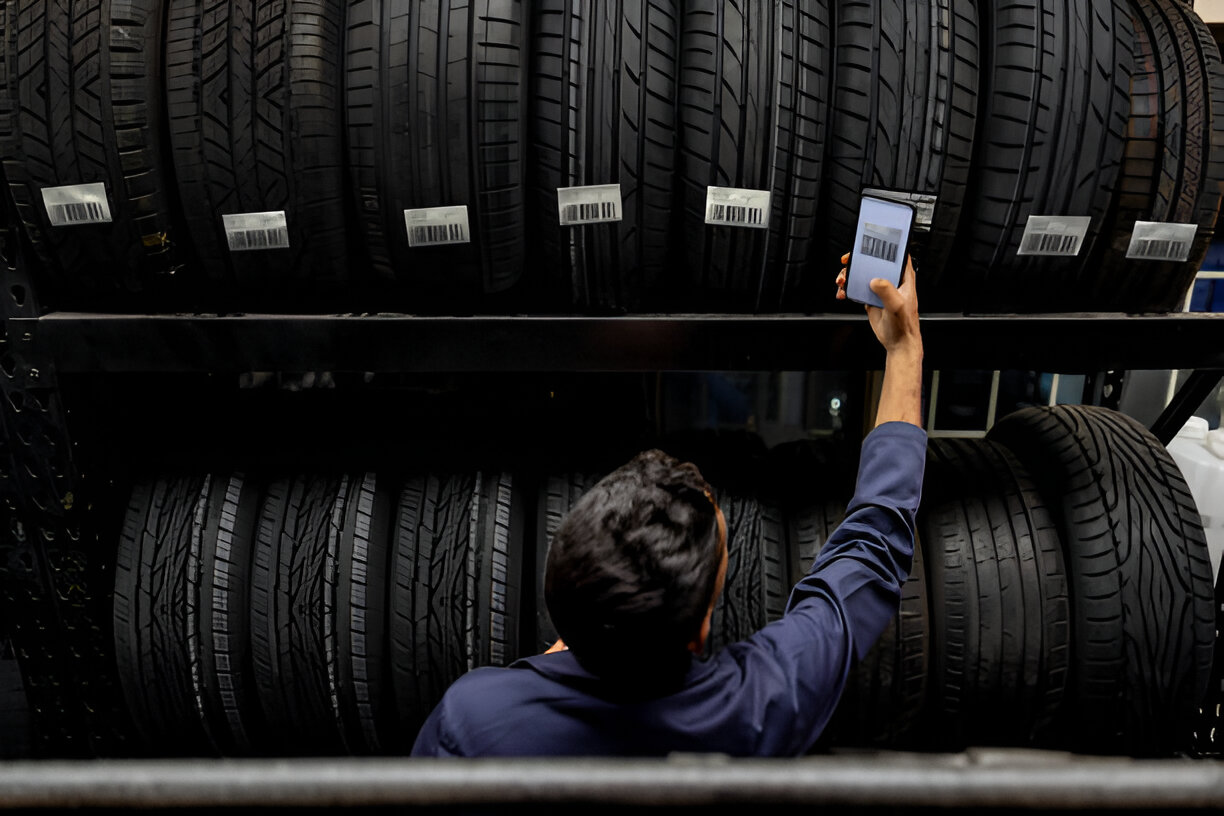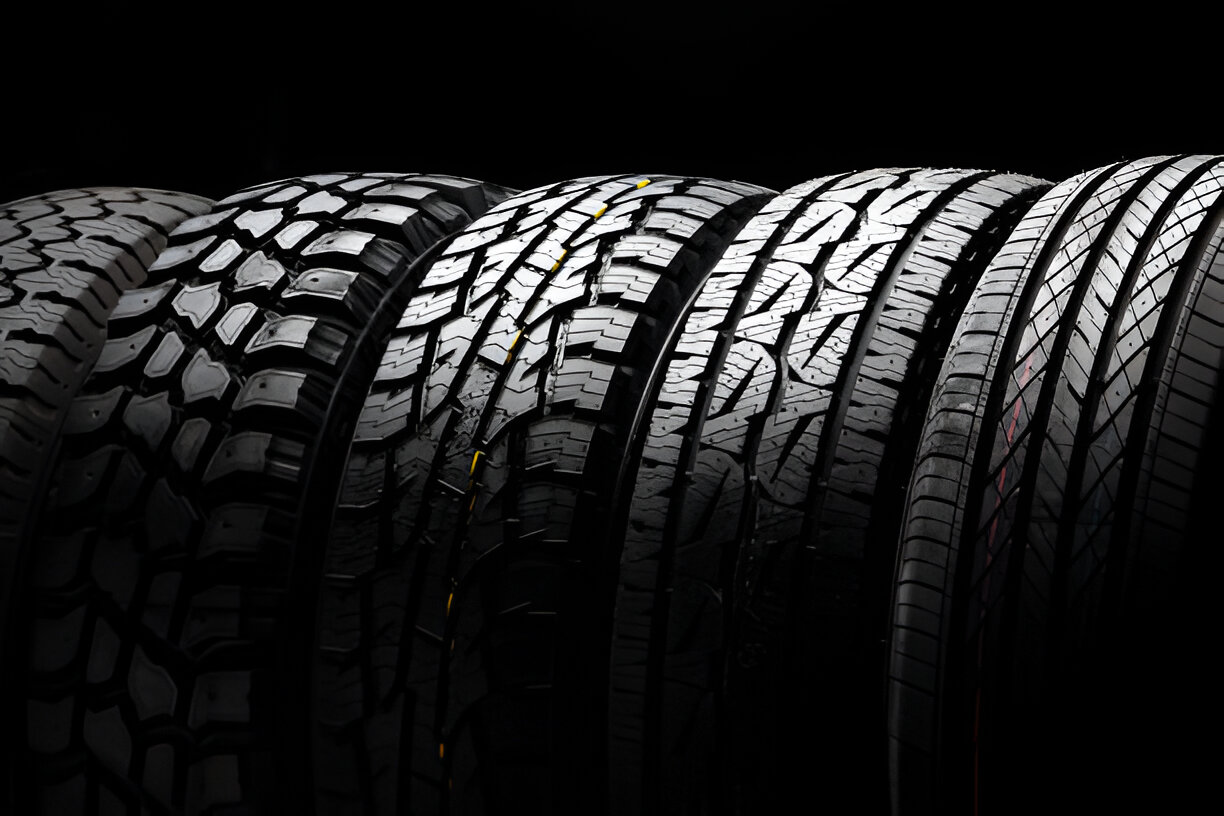Last Updated on November 16, 2024
Snow and Winter Tires: Everything You Need to Know for Safer Winter Driving
Winter tire-related content is abundant online; however, not all sources are reliable or deliver complete information to readers. We at Tires Easy are dedicated enthusiasts who believe that having the right tires on is one of the most crucial components of safe driving.
We are always eager to spread the knowledge to our customers and followers. With temperatures already beginning to approach the freezing point in northern regions, we have compiled the ultimate guide to winter tires for you.
Our guideline below aims to raise awareness and help people stay safe in harsh weather conditions. So, if you read just one article about winter tires this season, ensure it’s this one – because it covers everything you need to know in one place.
What Are Winter or Snow Tires?
Snow or winter tires are automotive tires made of unique rubber compounds. They use particular technologies and thread designs to enhance grip and stability in low temperatures on snow and ice. Years of research and development and relentless testing enable them to deliver the safest option and minimize the risks of losing traction and control in harsh winters. Winter tires are available in various sizes to fit nearly all types of cars and trucks.
The Science Behind The Winter Tires
Although they look similar to standard car tires, winter tires feature precise rubber formulas and different construction. The most notable difference is the rubber compounds. Standard summer car tires are susceptible to outside temperatures; when the temperature is nearly freezing, the rubber loses flexibility and becomes stiff. When the tire is not flexible enough, the handling, steering, and braking capabilities are wholly compromised, resulting in a dangerous vehicle to drive – where a winter tire is most beneficial. Winter tires are made of specific rubber material that retains flexibility even in temperatures below freezing.
Winter tires also have a specific tread design, which is as important as the rubber compound. First, the tread pattern is more aggressive, with deep grooves needed for snow and ice traction. The edges of the treads are somewhat sharper to reduce the hydroplaning in slushy conditions and perform well in wet conditions.
Another useful tip for recognizing a proper winter tire is the sipes – which are small slits in tread blocks. They are not as deep as the rest of the treads but play a vital role in snow. Research shows that when snow is pressed together, it creates a strong bond (like a snowball). Sipes serve a similar purpose – they are designed to trap small amounts of snow, which then bond with the snow on the ground to help create traction. It sounds like a minor feature, but remember that there are hundreds of these small slits on just one winter tire, and this small detail makes a big difference in real life.
Types Of Winter Tires
There are two main types of winter or snow tires, the option to be studless or studded:
Studless winter tires are the most common type and are used on most passenger vehicles, SUVs, and pickup trucks. They are made with specific rubber compounds and have distinct tread designs.
Studded winter tires are a more extreme option. Their design features small metal or plastic studs embedded in the tire’s tread that protrude a few millimeters from the tire, helping bite into icy surfaces for better grip. Their sharp edges help create friction against the slippery surface, especially in sub-zero temperatures. This aggressive technology gives it superior performance in extreme conditions but can be excessive for regular roads and mild winters. Many drivers ask if the studded tires are worth it. Although irreplaceable on ice and hard-packed snow, they perform poorly on dry pavement in regions with harsh climates. There’s also legislation in different states due to the damage they could incur on pavements.
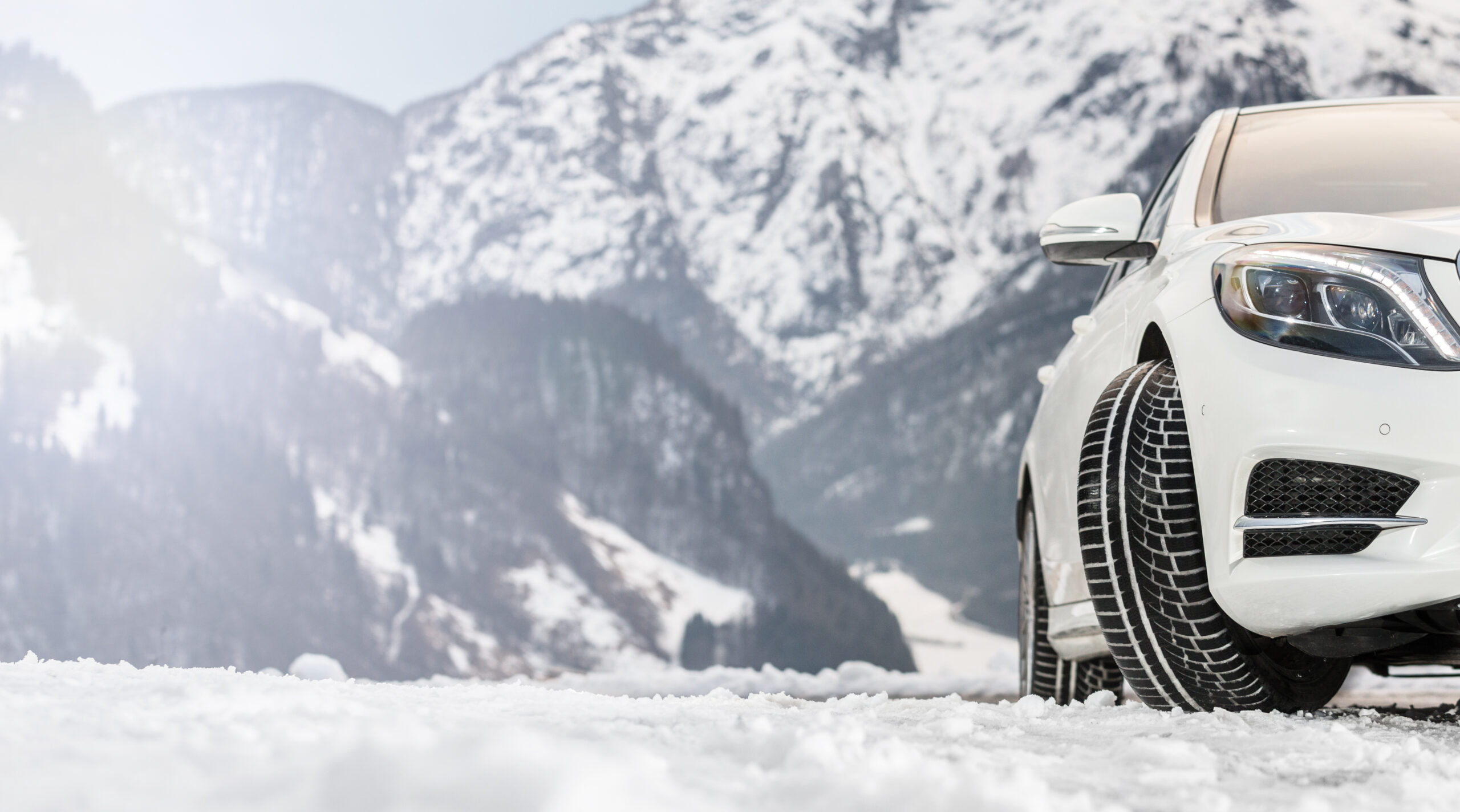
Why Use The Winter Tires?
Winter rubber is essential in temperatures below 45°F (7°C) and irreplaceable in areas with continental climates and snowy winters. Unlike all-season tires, which are acceptable in moderate conditions, winter tires are specifically designed for proper winter driving.
In recent studies completed in 2022 by the Tire and Rubber Association of Canada, braking distances were up to 30% shorter with winter tires compared to all-season tires. We cannot stress enough how significant this is and how big of a difference these braking capabilities can make in real-life conditions. Having a shorter brake distance is a life-saving benefit, meaning you are less likely to crash into a vehicle in front of you during panic braking on a snow-covered road.
One of the significant advantages of winter tires is their ability to maintain control on slippery surfaces. Whether it’s black ice, wet roads, or packed snow, winter tires are designed to enhance vehicle stability. Even if you drive an AWD or 4×4-equipped vehicle, winter tires are necessary to be safe on the road. Advanced drive train systems can only do so much if the contact patch (tire) is not up to the task.
Winter Tire Myths
Despite the technology behind winter tires and their straightforward purpose, numerous myths surround this type of tire. Many of these myths are laughable, but they are no laughing matter regarding real danger. Several winter tire myths have continued to grow over the years and refuse to go away for some reason. We have compiled all these myths, providing detailed reasons to debunk them and why you shouldn’t take the truth for granted.
Choosing The Right Winter Tires
Buying the correct set of tires, winter or summer is like buying shoes. It would be best to have proper footwear for the conditions and specific use. You cannot go hiking in flip-flops like you cannot go to the beach in a pair of cowboy boots. To find a winter tire that ideally suits your needs, you need to consider several aspects before you decide. We have compiled a detailed guide for this purpose, and apart from assessing your climate, driving habits, and budget, you need to know your dimensions, load index, and speed index.
Winter Tires vs. All-Season Tires
All-season tires are a popular choice and are often used as OEMs by car companies. As the name suggests, all-season tires are designed to perform well in various conditions. Tire manufacturers design all-season tires with rubber compounds prone to stiffening in low temperatures but still provide grip in various conditions, including mud, snow, ice, and dry roads in the summer. These tires are marked by the M+S symbol on the sidewall, indicating “Mud and Snow.” Despite their versatility, all-season tires are only reliable in moderate winters with light snowfall. While they may work in light winter conditions, they cannot match the braking power, traction, and control of winter tires in snow, ice, and freezing temperatures.
For drivers who regularly face harsh winter weather, investing in a set of winter tires is a crucial step toward ensuring safety on the road. When temperatures reach freezing, all seasons are incomparable to a set of dedicated winter tires.
Safety Tips For Snowy And Icy Roads
Winter creates a challenging environment for motorists; from snowfall, fog, and icy roads to freezing rain, practically everything can be hazardous. A set of winter tires is essential, but it’s equally important to be mindful of road conditions and adjust your driving style. To help keep you at your safest, we’ve prepared a few simple yet effective tips for driving on snowy and icy roads, regardless of the harsh climate.
1) Drive Under The Limit
When driving conditions are complex, you should constantly adjust your speed accordingly. Often, this means driving under the speed limit, which will help maintain vehicle control and allow you more time to react if something goes wrong.
2) Keep Your Distance
This is a very important piece of advice and can be crucial. In moving traffic, maintain a safe following distance from the vehicle in the front so you have enough time to brake in an emergency.
3) Do Not Panic If The Vehicle Starts To Skid
Unfortunately, skidding is the reality of driving in harsh winter conditions, and you should know how to handle it. If your vehicle begins to skid, your natural instinct will be to slam on the brakes, but that could only worsen things. When your vehicle starts to slide – avoid hard braking – instead, slowly decelerate and try to turn the wheel gently. In most cases, you can gain control by steering and adjusting the throttle.
4) Microclimate:
You don’t hear this often, but here’s another helpful tip to avoid hazardous driving. Due to “microclimates” (where one small area is experiencing different conditions than a neighboring area), some parts of the road may be ice-covered while others are dehydrated. This is particularly common with bridges and overpasses exposed to wind and moisture that could be covered entirely in ice. It’s difficult to spot these areas; they can sometimes be hidden in shade or less sun-exposed areas.
5) Check The Forecast
With today’s smartphone technology, staying informed about the weather forecast is easier now than ever. Using a weather tool or app is a great way to be prepared, especially for long holiday road trips or when driving in remote areas.
Climate-Specific Winter Tire Tips
With so many winter tire options available, we narrowed down a short list of specific tire models for various conditions. We covered models for moderate winter conditions, severe snow, and occasional ice on the roads. Here, you will find the most popular and most capable tires for passenger cars:
Bridgestone Blizzak WS90
- Best for: Ice and snow performance, including moderate winter conditions.
- Features: Multi-cell compound that wicks away water from ice for better traction; aggressive tread pattern enhances snow grip.
- Pros: Outstanding ice performance, excellent snow grip, and reliable braking on slippery surfaces.
- Cons: Tread life may be shorter on dry, warmer roads.
Michelin X-Ice Snow
- Best for: All-around winter performance in varying conditions.
- Features: FleX-Ice 2.0 compound for durability on ice, V-shaped tread pattern for traction in deep snow.
- Pros: Great on snow and ice with long-lasting tread; quieter ride than many other winter tires.
- Cons: Higher price point.
Nokian Hakkapeliitta R5
- Best for: Severe snow, ice, and moderate winter conditions.
- Features: Non-studded Arctic Grip technology that improves grip on ice and snow, excellent snow and slush evacuation.
- Pros: Superior ice grip for a non-studded tire, outstanding durability, and excellent fuel efficiency.
- Cons: Limited Availability and premium price.
Continental VikingContact 7
- Best for: Balanced performance on snow, ice, and cold, dry roads.
- Features: Special silica compound enhances flexibility in cold temperatures; interlocking tread blocks stabilize icy surfaces.
- Pros: Excellent snow and ice performance, stability on wet and dry winter roads, and long tread life.
- Cons: Not as aggressive in deep snow compared to some competitors.
Goodyear WinterCommand Ultra
- Best for: Moderate snow, ice, and occasional dry road use.
- Features: Specialized tread compound for cold weather flexibility, directional tread pattern for snow traction.
- Pros: Reliable on ice and snowy roads, suitable on wet surfaces, and offers a comfortable ride.
- Cons: Snow performance is excellent but not the best for intense snow.
Toyo Observe GSi-6
- Best for: Heavy snow, ice, and slush.
- Features: Microbit technology with walnut shells combined with the V-shaped tread improves snow and ice traction.
- Pros: Very good in snow and slushy conditions, affordable price point, stable on wet roads.
- Cons: Road noise may be slightly higher than competitors.
Maintenance Tips For Winter Tires
Follow these simple maintenance steps to keep your winter tires in perfect condition.
1) Keep The Optimal Tire Pressure
Underinflated tires are dangerous because they will not perform as they should, leading to uneven wear and poor fuel economy. If your vehicle is not equipped with a TPMS (tire pressure monitoring system), you can adjust it manually using recommended values to avoid overinflation of the tires.
2) Rotate Your Tires
Rotation is one vital tire maintenance procedure. It helps ensure even wear across all four tires, improving performance and extending tire life. Since front and rear tires wear differently, rotating them prevents excessive wear in specific areas. The general rule is to rotate winter tires every 6,000 to 8,000 miles. Typically, winter tires follow a front-to-back or diagonal rotation pattern, depending on whether your car is front-wheel, rear-wheel, or all-wheel drive.
3) Do Not Overload The Tires
Winter tires are designed for specific load capacities. Exceeding that capacity can result in excessive tire wear, overheating, or even a blowout. Always check the load index rating on your winter tires and ensure your vehicle’s load doesn’t exceed the limit. If you happen to carry heavy loads, distribute the weight evenly across the vehicle to avoid putting excessive stress on one tire.
4) Drive Smoothly
Aggressive driving can wear the tires quickly, particularly with winter tires. Sudden stops and sharp turns can wear down your tires more quickly. Practice steady acceleration to minimize tire strain, especially when driving on slippery roads.
Winter Tire Tread Depth And Safety Check
The winter tire tread block is one of the most defining aspects of this type of automotive tire. Its tread design, combined with deep grooves, channels water, snow, and slush, maintains traction.
There are three main types of treads in winter tires – directional (V-shaped), symmetrical, and asymmetrical.
The directional is engineered to enhance traction in slushy and snowy conditions by efficiently channeling water and slush away from the tire’s contact patch.
The symmetrical tread patterns feature grooves and tread blocks mirrored across the tire’s surface, providing even wear and excellent traction on snowy roads. Symmetrical treads are often found on budget-friendly winter tires and offer a smooth, quiet ride.
Asymmetrical tread patterns combine different designs on the inner and outer edges of the tire. The inner side typically has more grooves to handle snow and slush, while the outer side has larger tread blocks for improved cornering and handling on icy roads. Asymmetrical tires are versatile and perform well in various winter conditions, making them ideal for drivers who encounter wet and snowy surfaces.
In terms of depth, modern winter tires usually have a tread depth of 10/32″ to 12/32″. Some models can have more, meaning they are more aggressive and capable. Tread depths around 4/32 inches (about 3 mm) are considered unsafe. Low tread depth means the tire features will not function properly and should be replaced.
The Environmental Impact of Winter Tires
Despite being an absolute necessity in so many areas around the globe during winter, winter tires can negatively affect the environment due to increased resource consumption, adding to the overall pollution. Though minimal, winter tires can also affect fuel consumption. To minimize the environmental impact, use them wisely, maintain them, and dispose of them properly.
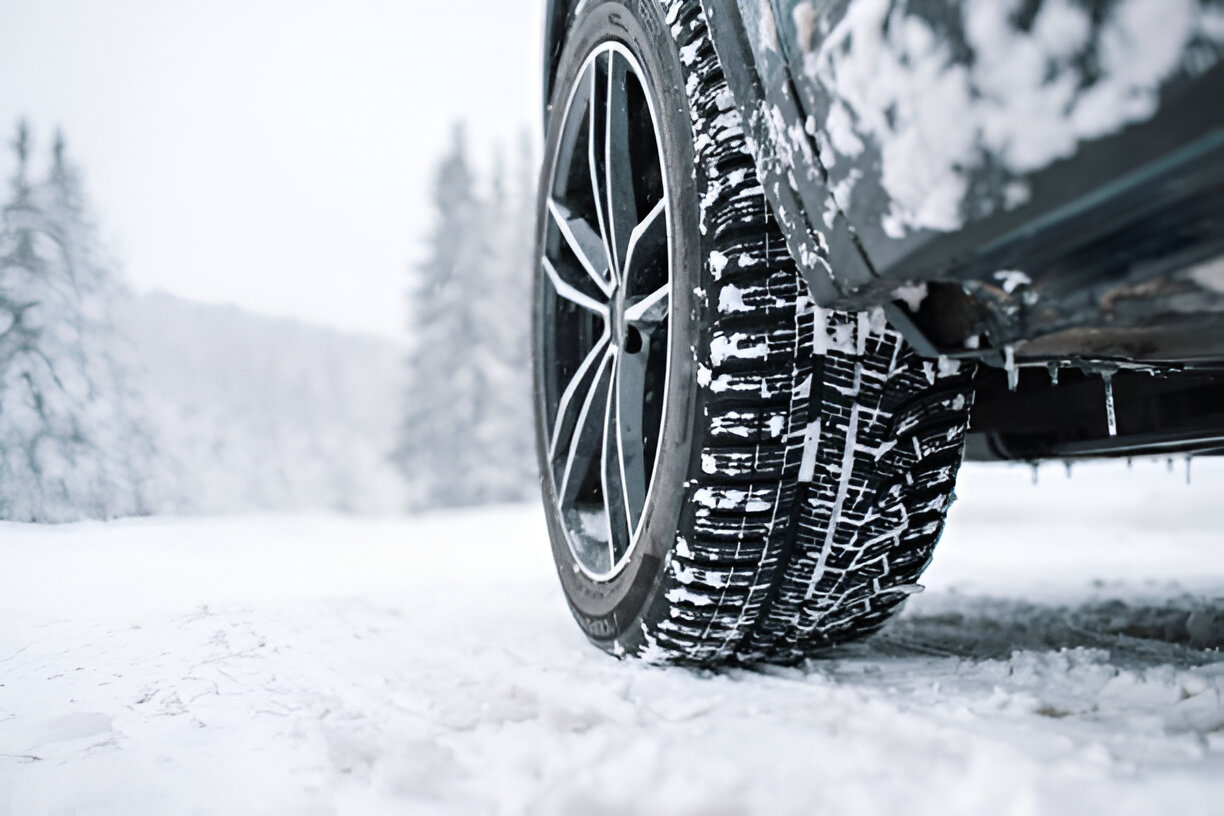
Legal Regulations and Insurance Considerations For Winter Tires In the USA
While there are no federal requirements for winter tires in the US, some states enforce restrictions on studded tires and mandate chain use during specific conditions. Since studs can cause road damage, they are typically only permitted during specific winter months or are sometimes banned altogether. Studded tires are allowed all year round in states with the harshest climate conditions, like Alaska, Idaho, or Colorado. However, Oregon and Washington allow studded tires only between specific dates (seasonal restrictions).
From an insurance standpoint, winter tires can help with accident prevention and may offer indirect benefits regarding claims and liability. In areas where winter tires are legally required or advised, using them could improve the outcome of a claim by showing that you took appropriate safety precautions. In regions with traction laws (certain highways in Colorado or mountain passes in California), failing to use winter tires or chains can result in fines. It may also influence insurance claims if it’s shown that the lack of winter tire usage contributed to an accident.
Of course, the best advice is to always check your local and state regulations for winter tire requirements and any guidelines issued by your insurance provider to stay safe and compliant.
Economic Comparison: Long-Term Cost of Winter Tires vs. All-Season Tires
One of the main concerns is the cost of owning winter tires compared to standard all-season tires. There is a misconception that winter tires are significantly more expensive than comparable all-season tires, and this is not true; the average cost is almost identical.
Some drivers are unconvinced that winter tires are a valuable investment and may use an all-season to “save Money.” Although it seems financially logical since all-season tires are more cost-effective in terms of up-front costs, replacement frequency, and maintenance expenses, the winter tires offer superior safety, stability, and dependability – there are additional concerns. All-season tires might be sufficient if you live in an area with mild winters. However, for severe winter regions, the long-term costs of winter tires may be worth the safety benefits, particularly in accident prevention and overall performance on snowy and icy roads.
Winter Tires and EV Efficiency
The rise of electric vehicles (EVs) has significantly impacted the tire industry, with manufacturers needing to design winter tires tailored to EV’s specific requirements, specifically for them. The trend recently influenced the winter tire segment. Unlike traditional vehicles, EVs deliver power differently and are heavier in weight, which can pose serious risks in slippery conditions. Ideally, EV winter tires must provide all the benefits they already do (maintain grip, handle the enormous weight of the modern battery-powered models, remain stable in all conditions, and keep the brake distances short), plus low rolling resistance. It’s a tall order, but one company has successfully managed to produce competent EV winter tires, which is the Nokian brand Hakkapeliita RV 5 EV tire.
Where To Buy Winter Tires And When?
You can purchase winter tires from numerous retailers, tire shops, or online, but before you go and get a fresh set for your vehicle, you should know that prices and conditions might vary greatly depending on the location. We suggest concentrating on online sources because online retailers like Tires Easy or Giga Tires will have the best prices and the most convenient delivery options. We mean our unique shop delivery program, which ships your tires directly to a local tire shop. Simply schedule an appointment to have them mounted and balanced, and we can also assist in disposing of your old tires, keeping your garage clutter-free. We also provide a wide selection of tires and have the most comprehensive knowledge center and blog section. We are open 24/7 and offer numerous incentives and discounts so you can find great deals, free shipping, and other stuff.
Savvy shoppers buy winter tires in summer when the prices are lowest, and discounts are available. Fall is also a good time for shopping since new models are introduced and retailers are stocked for the season. You can always shop in the middle of the winter if the conditions surprise you and you realize that your all-season rubber simply won’t do. However, in that case, you might experience prolonged times to get them mounted and long queues at the local tire shops.
How to Store Winter Tires Properly?
Storage of winter tires during summer is one of the less covered topics, which is very important since improper storage can damage your tires and make them unusable. Fortunately, you should know a few simple but crucial things about it.
You can store your winter tires with or without the wheels. There is no right or wrong way. But this decision will affect the way the tires are kept. When the winter tires are mounted on the rims, you should stack them horizontally since it will minimize the pressure on the rubber. However, when the tires are stored without the wheels, they will require more attention to prevent deformation during storage. Do not hang them; this can distort the shape, and store them vertically upright.
For unmounted tires, be cautious of prolonged pressure on one area, which can lead to flat spots or distortion. This is why storing them upright is preferred, as it distributes the weight evenly. Remember to rotate the tires periodically (every month or two) to prevent them from developing flat spots.
Tires should be stored in a cool, dry, and clean environment. Avoid places where temperatures fluctuate wildly, like garages exposed to extreme heat, cold, or areas with high humidity. The ideal location would be a basement or climate-controlled storage unit. You should avoid direct sunlight or outdoor storage since UV rays can break down the rubber compounds in tires, and outdoor storage exposes tires to harmful elements like rain, humidity, and temperature changes.
FAQ
• Do Winter Tires Make a Difference?
Yes! Winter tires significantly improve traction, handling, and braking performance on snowy and icy roads. Studies show that vehicles equipped with winter tires have reduced stopping distances and better control in winter conditions than all-season or summer tires.
• At What Temperature Should I Switch to Winter Tires?
Winter tires are most effective at temperatures below 45°F (7°C). Once temperatures regularly dip below this threshold, it’s time to switch. The soft rubber compound in winter tires provides a better grip in the cold but can wear quickly in warmer weather.
• Can I Use Winter Tires All Year?
It’s not recommended, and it could be dangerous. Winter tires are designed for cold weather and lose durability and effectiveness in warm temperatures. Using them in warm conditions leads to faster wear and reduced performance. It’s best to switch back to all-season or summer tires in the spring.
• Are Studded Winter Tires Better Than Non-Studded Ones?
Studded tires offer enhanced grip on ice due to metal studs embedded in the tread, making them ideal for icy conditions. However, they can damage dry pavement and are often restricted to certain seasons or locations. Non-studded winter tires use advanced tread designs to offer effective performance in snow and ice and are usually legal year-round.
• How Long Do Winter Tires Last?
The average lifespan of winter tires is 3-4 winter seasons, depending on usage and conditions, or approximately 20,000-25,000 miles. Regularly rotating, inspecting, and storing them properly during off-seasons can extend their lifespan.
• Do I Need Winter Tires If I Have All-Wheel Drive (AWD)?
While AWD helps with acceleration, winter tires enhance braking and cornering on snowy and icy roads. AWD alone doesn’t offer the same level of control that winter tires provide in winter conditions, so winter tires are still recommended for improved safety.
• Can I Use Only Two Winter Tires Instead of Four?
It’s generally not advisable. Using only two winter tires can create an imbalance, leading to uneven handling, braking, and cornering. Winter tires should be installed on all four wheels for best performance and safety.
-
Automotive Specialist
-
Editor
-
Writer




